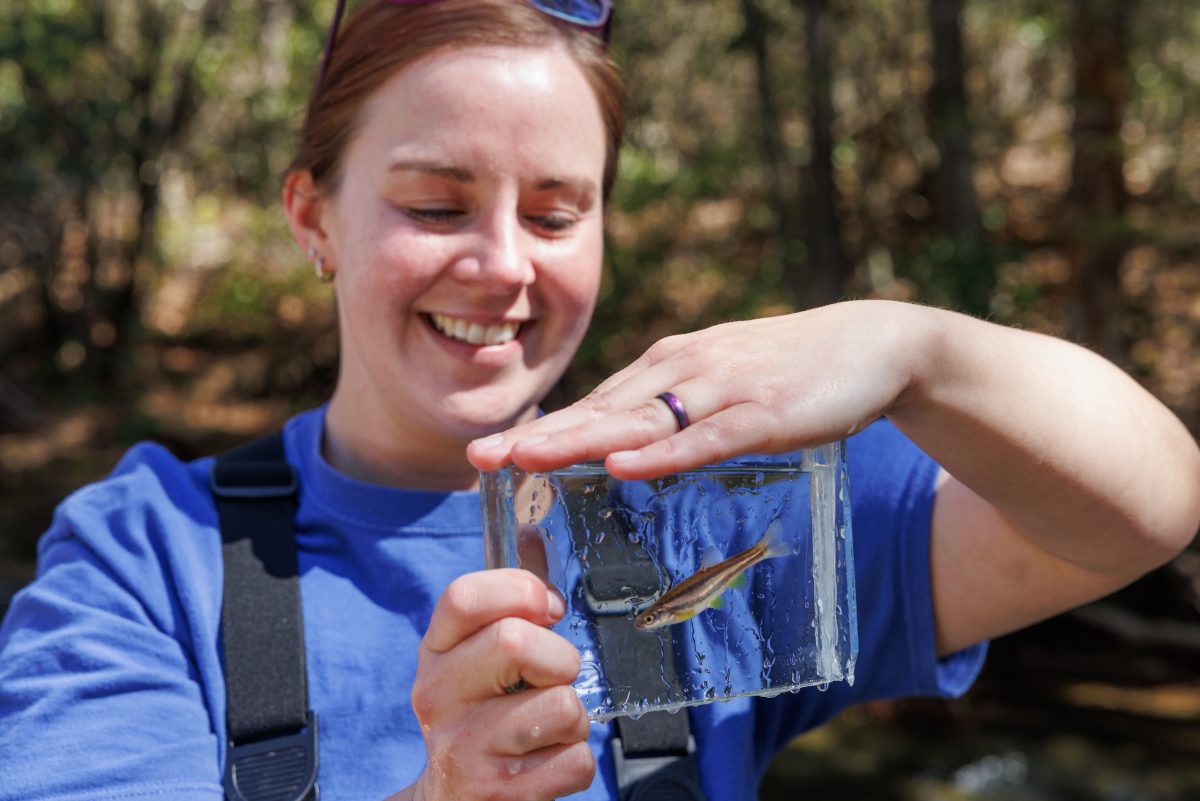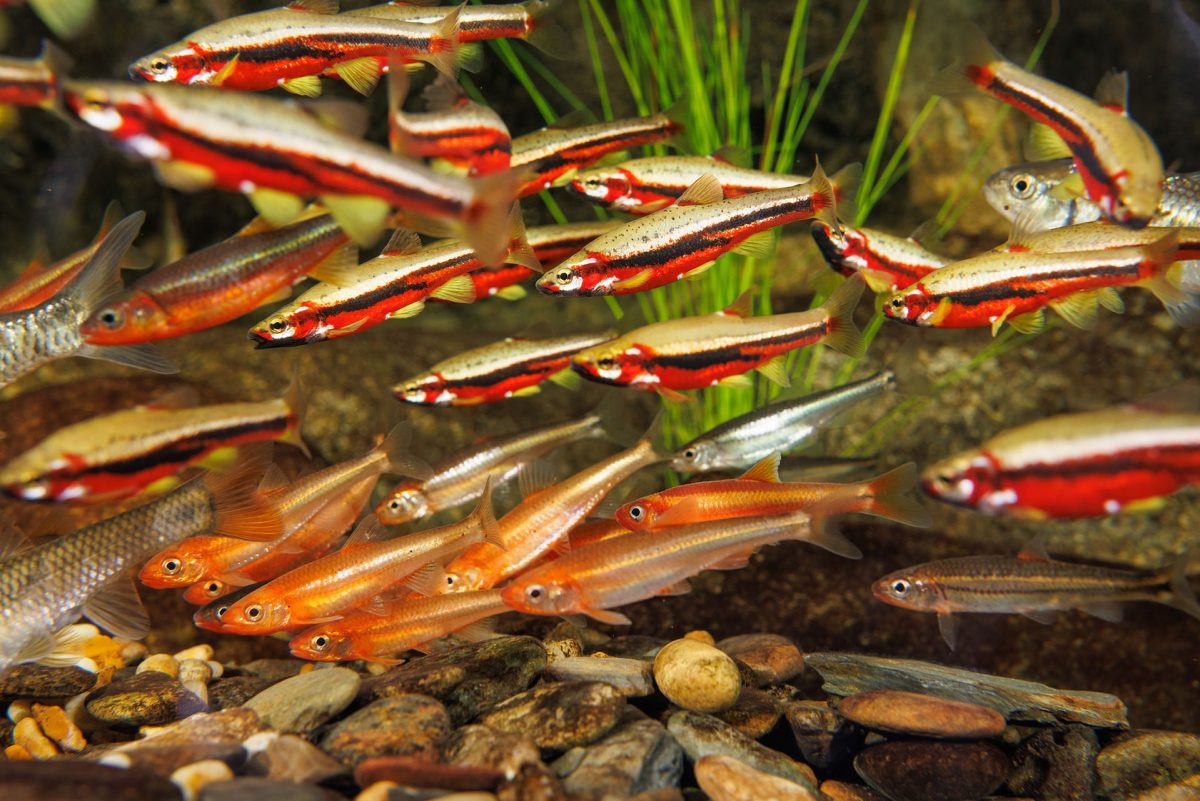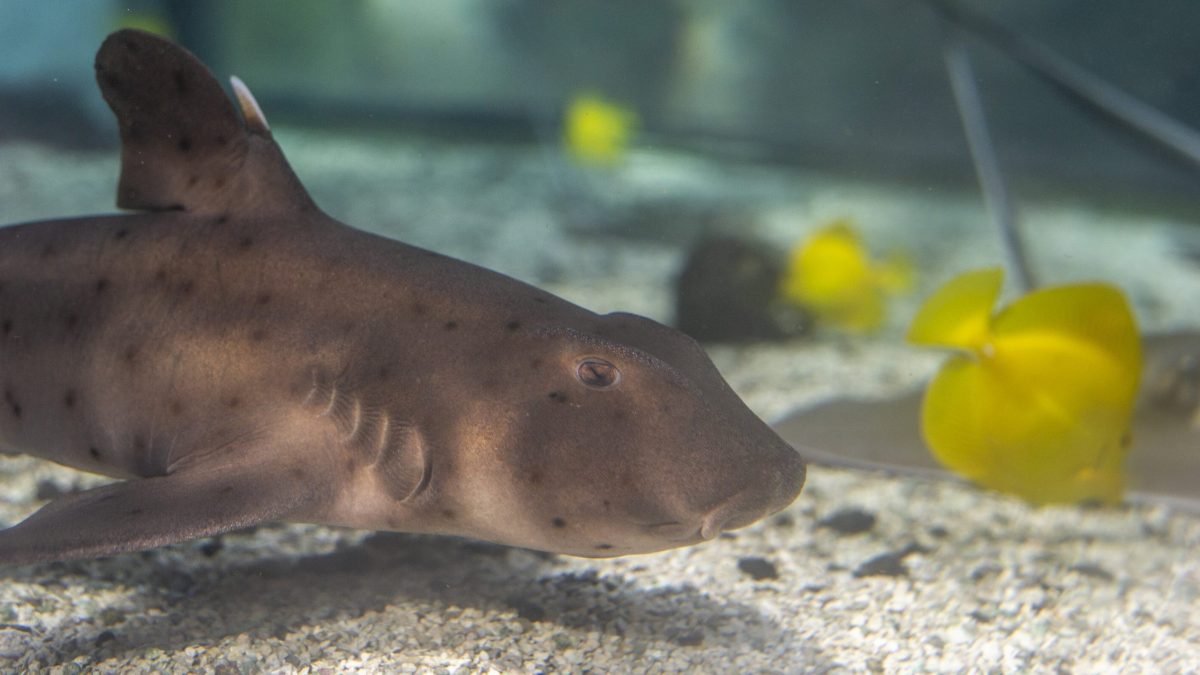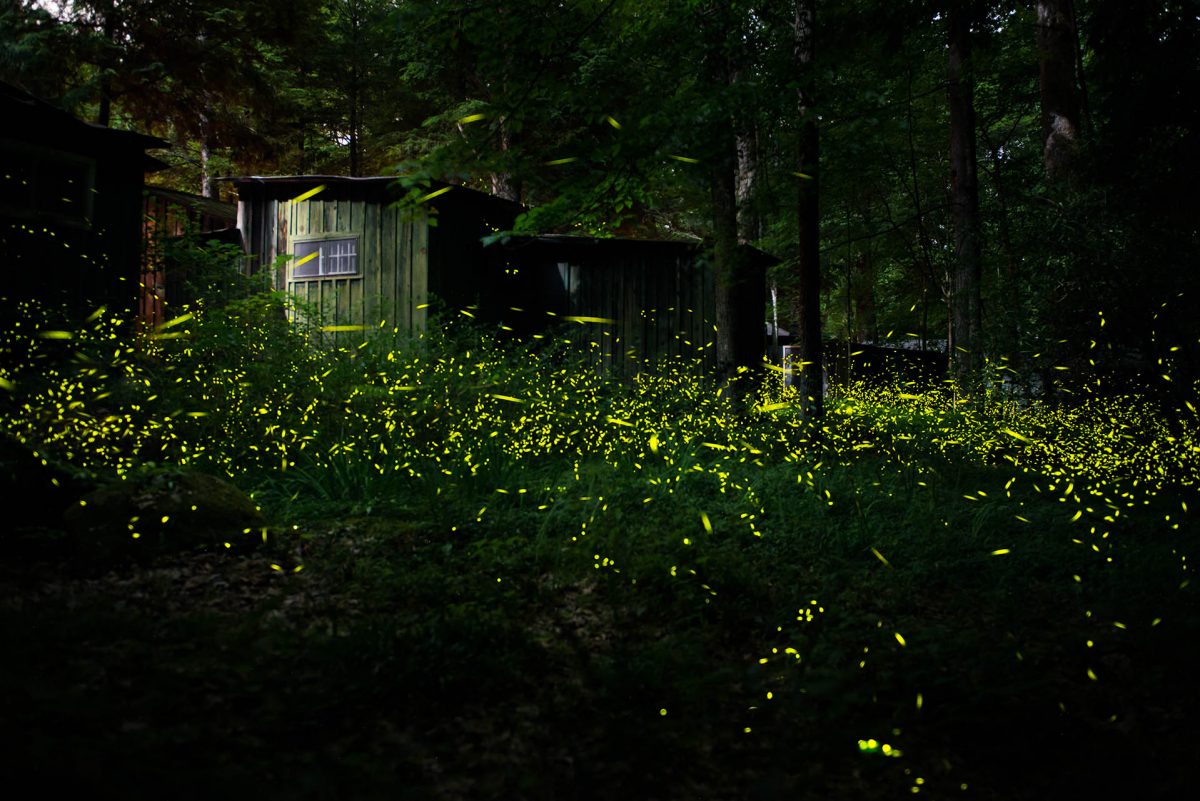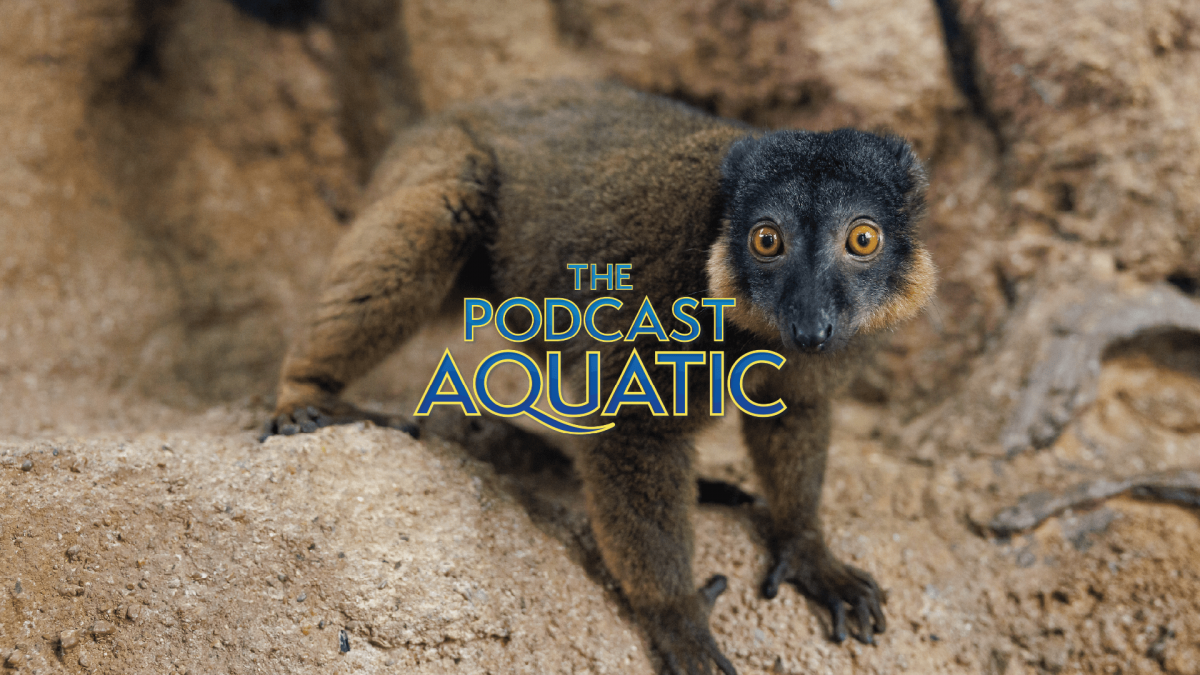Visitors to the Boneless Beauties exhibit will enjoy several new animals added during the week of Thanksgiving. A trio of Lionfish, three Spiny Lobsters, and one Giant Hermit Crab were placed in the former the Common Cuttlefish exhibit at the gallery’s entrance.
Though they’re not quite as fierce as their terrestrial namesake, Lionfish have the potential to be just as deadly. Their dorsal spines can deliver a venomous sting that can cause severe pain and paralysis. However, they pose an even more significant threat thanks to their impact on marine ecosystems as an invasive species.
These vibrantly striped fish are a favorite of reef hobbyists thanks to their striking coloration and flowing fins. That popularity has also led to their introduction into the Atlantic Ocean (off the U.S. east coast). Lionfish are aggressive and fast-breeding predators that readily out-compete many native fish species. Typically found in the tropical waters of the South Pacific Ocean and the Indian Ocean, the Lionfish’s introduction to these non-native habitats is potentially harmful to those ecosystems.
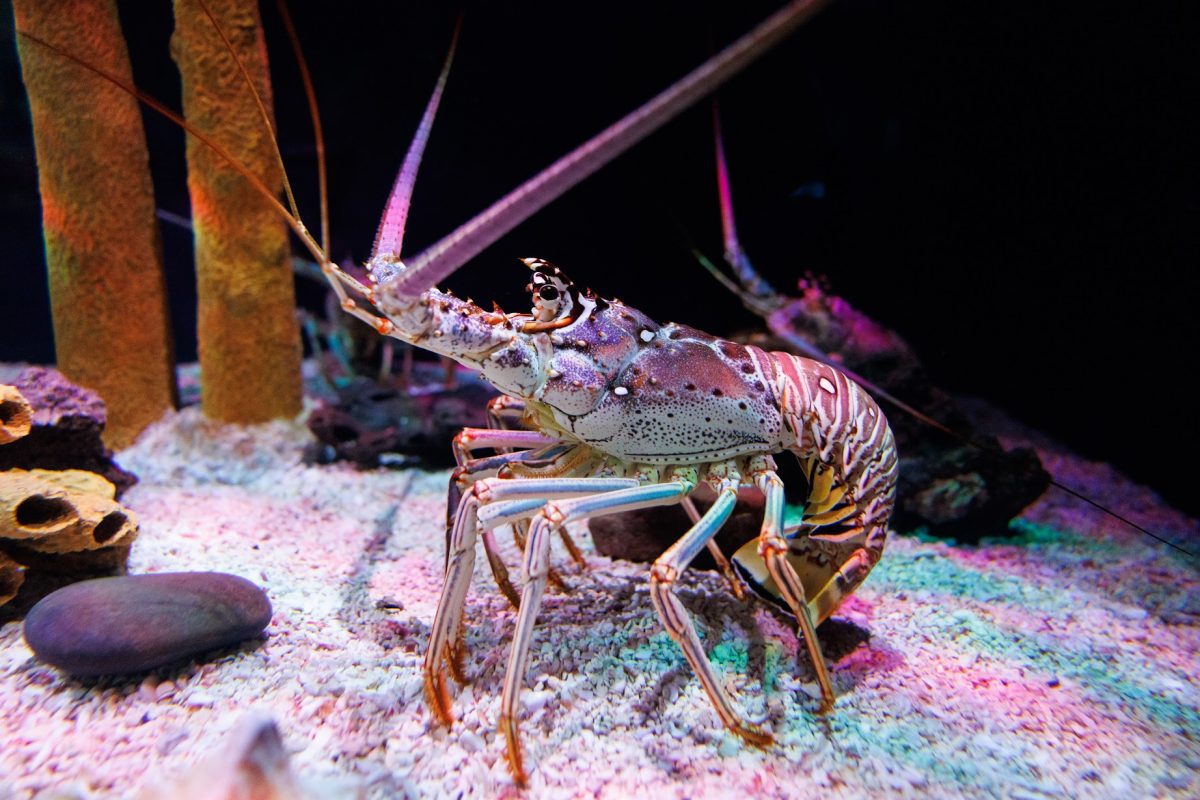
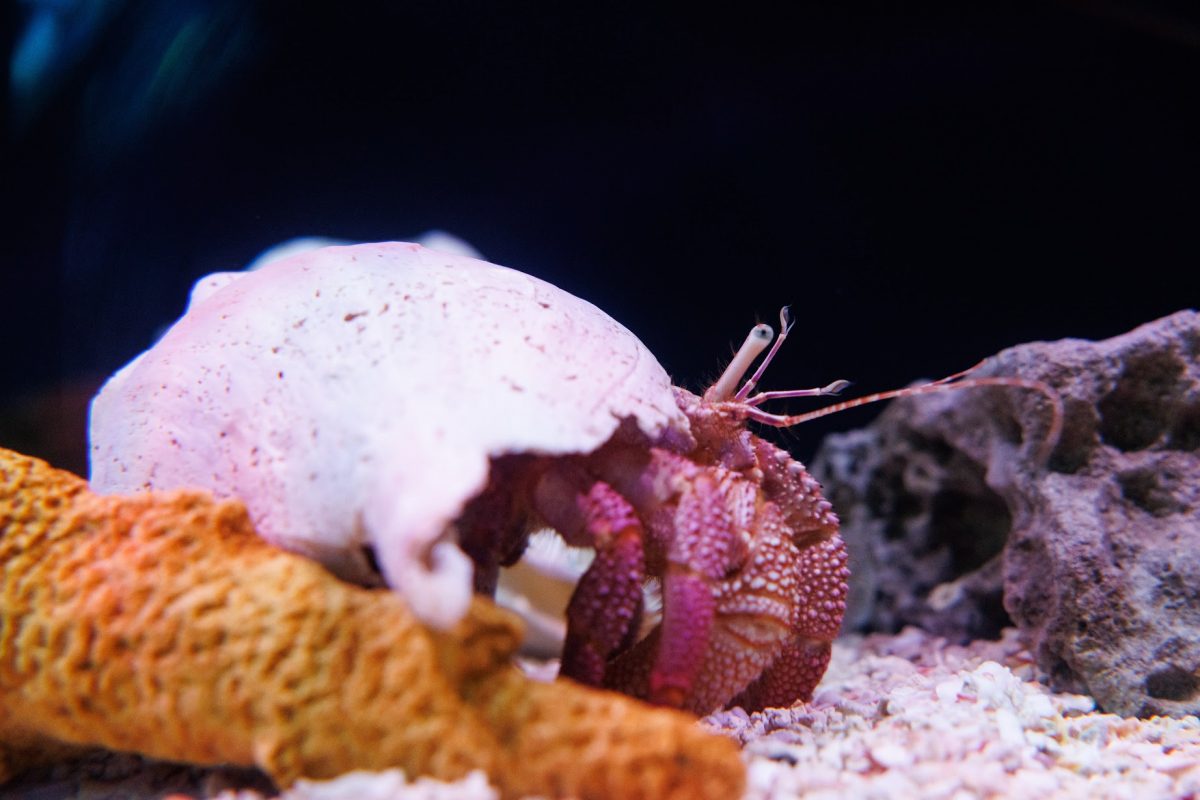
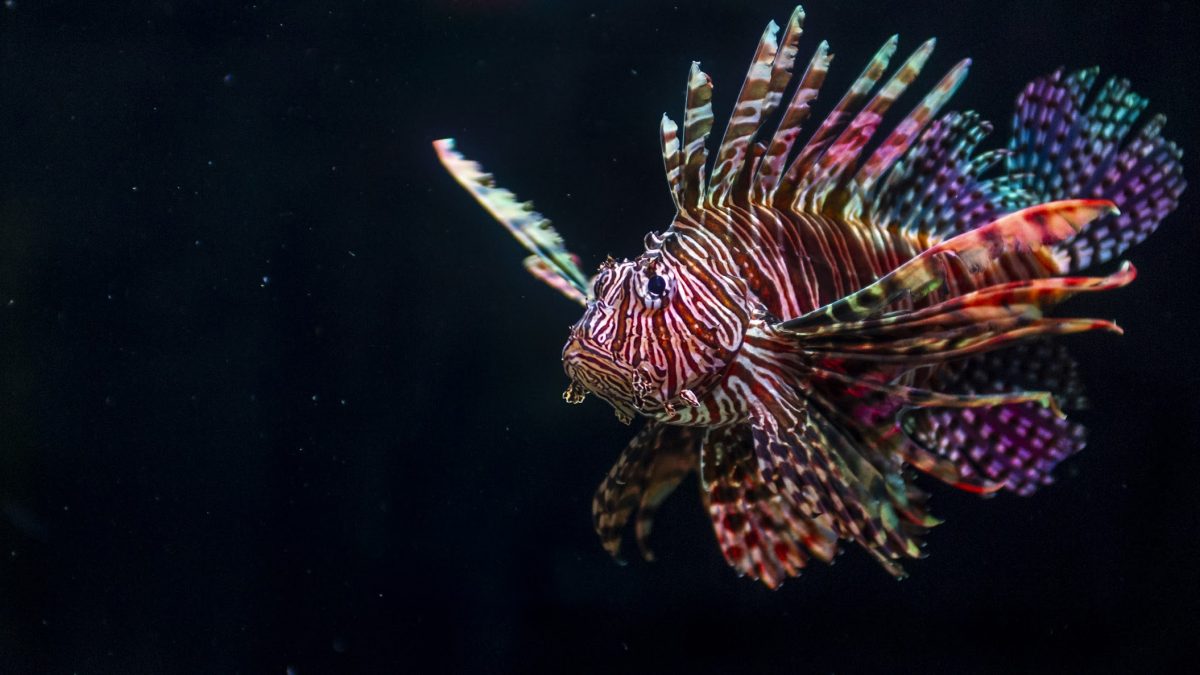
Joining the Lionfish in the exhibit are Spiny Lobsters, named for the protruding spines on their exoskeleton that help protect them from predators. Spiny Lobsters lack the claws that hallmark the more familiar American Lobsters. Spiny Lobsters inhabit the tropical waterways of the Atlantic Ocean, the Gulf of Mexico, and the Caribbean Sea, where they feed on snails, clams, and crabs on the ocean floor at night.
The exhibit’s final new resident is a Giant Hermit Crab. These massive crustaceans can be found in the wild from the coast of North Carolina through Florida into the Gulf of Mexico, and the Caribbean Sea. Like their smaller cousins that are often kept as pets, these crabs swap shells throughout their life cycle as they grow. They frequently inhabit conch shells, which are large enough to contain their considerable size.

